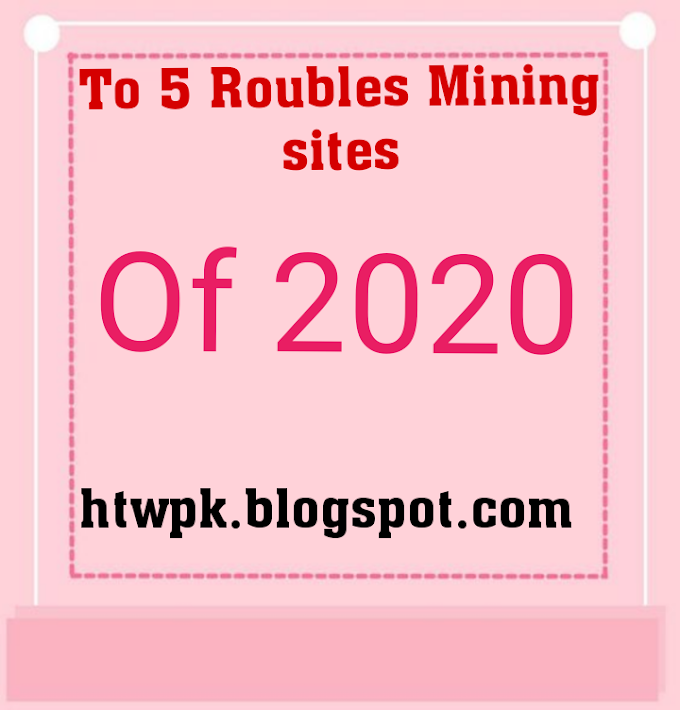How to Make Money Blogging in 2022
Is it possible to make money with a blog? Yes.
It is easy? Absolutely.It's fast? Quite the opposite.
How to Make Money Blogging.
Last week I
shared with you some tricks that had helped me write better posts, and today I
want to talk to you about the different ways to monetize (yes, I love this
word) a web page.
A lot of people start blogging with the idea of getting a little extra, but they think there are only two sources of income: AdSense and affiliate marketing. The reality is that there are more ways to earn money.
A lot of
people start blogging with the idea of getting a little extra, but they think
there are only two sources of income: AdSense and affiliate marketing. The
reality is that there are more ways to earn money.
Based on Market Factors, Not Your Passions.
There’s a reason that 95% of bloggers fail, and it’s not why you think.The current myth is that bloggers fail because they aren’t “passionate enough.”“Push through failure to succeed,” they say.Google “why bloggers fail,” and you get the same answer from the #1 result: bloggers fail because they aren’t passionate enough..
Whether you
have a blog with lucrative intentions or not, this post interests you. If you
are in the first group, what I am going to tell you next will give you new
ideas to get the most out of your efforts; If you are in the second, when you
finish reading this article you will understand better how the authors of the
most popular pages on the Internet earn their bread.
Do you want
to know how to blog and earn money? I will explain all the ways that I know and
that exist if you keep reading.
Making money from a blog is a long-
distance race, not a sprint.

Before
continuing, I would like to warn you that making money from a blog is always a
long-term plan. VERY long term.
Traffic,
authority, trust, connection with readers ... these are essential things that
cannot be achieved in two days, so if you are looking to get rich in 3 weeks I
am sorry to disappoint you.
Today there
are millions of blogs on the Internet, of which 99% are abandoned after a few
months. Therefore, if you want yours to bring you financial benefits, one of
the essential qualities you need is perseverance. And I'm not talking about
months, but years.
1. CPC
Advertising (AdSense)
The easiest and fastest way to monetize a blog is through CPC advertising. The acronym CPC stands for "Cost Per Click", which means that you get paid every time a user clicks on one of your ads.
There are many CPC ad networks, but without a doubt the most popular and the one that works the best is Google AdSense. Registering is as simple as entering this website and filling in a small form. Once Google approves your account (it usually takes less than 48 hours), you can insert advertising blocks of different sizes on your blog.
What sets
AdSense apart from other advertising systems is that you don't choose which ads
to display, Google does it for you. The big G analyzes the content of the page
where you have inserted the block and shows advertising that it considers
relevant to your readers. In this way, Google kills several birds with one
stone:
The ads that
are shown (in theory) are interesting for your users
Being
interesting, there are more chances that they will click and therefore you will
earn more money (and Google too)
1. Advertisers can reach potential
customers despite not knowing you or your page
2. Are you willing to blog for the next
5 years?
3. If not, maybe it would be better for
you to invest your time in something different, or that you take your blog as a
hobby and not as a business.
4. Once this point is clarified, we can
start 🙂 These are 9 ways to make money with a blog.
The income
per click depends on the competition that exists in that niche. The more
advertisers there are, the more they have to pay for their ad to appear and
therefore more money can be shared between you and Google. For example, in some
super-competitive topics such as "forex", "insurance" or
"criminal lawyers" you can get to charge 3 or 4 euros per click, but
the normal thing is to receive only a few cents.
If you want
to know how competitive a term is, you have two options:
Do a Google
search and see how many ads appear on the screen. If all the spaces are full
(above the search results, below and in the sidebar) that means that it is a
competitive niche in which the click is well paid.
Go into the
Keyword Planner and search for that term. The CPC column will give you an
estimate of what businesses pay per click for your ad to appear in searches and
blogs related to that topic. What you would charge yourself is less than half
that CPC (about 30-40%).
1. But not everything is pink and
wonderful in the land of AdSense. Before you start advertising on your blog,
you should consider the following:
2. Your readers may get angry and
consider you a sold-out. Sometimes having publicity gives a bad image and
reduces seriousness to your blog
3. Typically, for CPC advertising to be
profitable you need to have a large amount of traffic
4. Google has the right to close your
AdSense account whenever they want and without giving you any kind of
explanation. It happened to me in the past.
Examples of blogs with CPC advertising:
Digital Photography School. popular blog generates a high volume of
income through AdSense. If you enter any article you will see ads both in the
sidebar and at the bottom, just before the comments.
Intexmedia. This company from Cáceres has a blog network called Dinablog
that includes sites with high traffic such as bebefeliz.com or
Buscartrabajo.com that invoice thousands of euros per month just with the
clicks of their users.
2. CPA Advertising
Another lesser known type of advertising is CPA (Cost Per Action)
advertising. In this case, when a reader clicks on your ad, they are redirected
to a landing page (landing page) where they have to perform an action, such as
opening an account, filling out a survey or giving their personal data to
receive more information. For each user who completes the action, you get a
commission.
As you can imagine, the conversion rate (the people who click on your ad
and also take the action) is much lower than in the case of CPC advertising.
However, this is offset by a much higher conversion fee - usually several
euros.
Here's an example of an insurance company landing page. When the user
clicks on your ad, they come to this page where they are asked to enter their
name and phone number so that later they will call you and try to sell you
insurance. If it does, you get € 1.75 (although the user later ends up not
buying anything).
For CPA advertising to be successful, it is important that it is highly
relevant to your blog niche. If you have a personal development blog and you
put an ad for Movistar to attract new clients, it is most likely a failure.
However, that same blog post about mobile rate deals will do a lot better.
Examples of blogs with CPA advertising:
Although more than a blog is a website, Rastreator is a good example of CPA advertising. This company is dedicated to making comparisons of the products that pay the highest commissions per conversion (insurance, mortgages, ADSL ...), and displays CPA ads for each company in the results of those comparisons. You can do the same on your blog, but on a smaller scale .
In general, the more specific the topic of your blog, the better CPA
campaigns will work (as long as they are relevant, of course).
The best known CPA advertising network in the world
3. Private advertisers
An alternative to the ad networks that I have discussed in the previous
points are private advertisers. Just as magazines rent their pages to
companies, you can rent areas of your blog to companies in the sector for a
fixed monthly price.
There are two ways to find private
advertisers:
Offer your services to potential clients. This strategy consists of
getting in contact by email or by phone with companies in your niche that might
be interested in advertising on your blog. You can start with those that have
contracted AdSense advertising, because you know that they already invest in
online advertising every month. If you can show them with data and graphs that
it would be more profitable for them to advertise on your page than through
Google, they may be willing to make the change.
Let them contact you. If you manage to make your blog become a benchmark
within your niche, it is very possible that the companies themselves will
contact you to advertise on your website. The easiest way for this to happen is
by publicly showing that you accept ads on your website. For example, you can
have a banner with the message "Advertise on this blog" that leads to
a page where potential advertisers can download a dossier with the statistics
of visits from the last year, the reasons why it would be profitable for them
to advertise on your page and prices.
As in the case of CPA advertising, the more specific your niche is, the
better this monetization method will work, since there will be more companies
interested in advertising on your page. In addition, the more traffic you
generate, the more money you can ask advertisers, since more people will see
your advertising every day.
If you want to see what a good dossier for advertisers looks like, I
recommend that you take a look at the Police Forum. You can download it by
clicking here.
Examples of blogs with private advertisers:
Barbra is a blog for working moms. Its author, Lucy, writes about a lot
of topics: anecdotes with children, crafts, things to do with them, things to
do without them, beauty, things to give away ... The page became more and more
popular and right now it works with the income of the sponsors that you can see
in the sidebar.
National Police Requirements. When I started looking for ways to earn
money online, I created this page with the idea of making money with
advertisements for competitive exams academies and gyms. It failed due to lack
of traffic and I only managed to sell one ad (hooray!), But it can still serve
as an example. I use a plug-in for Wordpress called CrankyAds that handles
everything automatically. If you want to see how it works, go to the page and
click on the banner at the bottom that says "Click here to advertise in
this space."
54. Affiliate Marketing
Affiliate marketing is nothing more than a specific type of CPA advertising in which the action that the user has to take is to buy something. That is, you act as a salesperson, promoting a product or service from another company on your blog, which pays you a commission every time you generate a sale.
Affiliate platforms work as follows:
You register as an affiliate
Through the platform you create special links with your identifier, which
point to the page of the product to be promoted
You put those links on your blog
A reader clicks on any of those links, makes a purchase in the next X
days (X depends on the company) and you get a commission
At the end of the month, the total amount of all commissions will be
credited to your checking account
Easy right?
The first affiliate program in history was Amazon's, but today there are
many more and in practically all sectors: travel, telephony, digital products
... To find them, you just have to Google the name of the company followed by
the word 'affiliates'.
Sometimes the companies themselves manage their affiliate programs, but
the most common is that they do so through affiliate networks. These are some
of the most important:
1. Amazon Spain
2. TradeDoubler
3. Zanox
4. ClicBank
5. CommissionJunction
The amount of the commission varies depending on the company, and ranges from 3-5% on the sale price in the case of physical products to 50-70% when it comes to digital products.
The key to being successful with affiliation is to intercept users who
are in the middle of the purchase process and bring them to your blog, and the
most common way to do this is by writing articles about offers or product
reviews and ranking them in Google for terms. commercial. I explain.
If someone searches Google for the word "coffee pot" you don't
know what they mean. Maybe you want to buy a coffee maker, but maybe you
already have one and it has broken down, or maybe it's a child looking for
photos of coffee makers for a school job. However, if a user searches for
"buy coffee maker", "Nesspreso coffee analysis" or
"Tassimo coffee price", we know that he is thinking of buying a
coffee maker and, therefore, it is much more possible that he will end up
generating a sale. This second type of user is the one you are interested in
visiting your blog.
Examples of blogs that use affiliate marketing:
Offerman. Every day the author of this blog publishes different offers of
electronic products, accompanied by a brief analysis. All links on the web are
affiliate links for which you take a commission. I don't know how much money he
will make per month, but I think he must be doing quite well.
Running shoes. Luís Clausín's website is the reference page on running
shoes (a good example of a super-specific niche). All links are affiliate
links.
This video game search engine created by David Bonilla and his partner
Jerónimo tracks 29 stores and tells you where you can buy at the best price.
Obviously, the purchase link is an affiliate link
Interested in the world of affiliation? Visit the specialized forum affiliate.com.
5. Own products
The most lucrative method to make money with your blog is to sell your
own products, since there are no intermediaries and therefore the margins are
wider.
The most common thing on the Internet is the sale of digital products,
and more specifically that of info-products such as ebooks or courses. The
advantage of these types of products is that duplicating them is free, so once
created it costs the same to sell one as a million. In addition, the entire
sales process can be easily automated thanks to platforms such as E-Junkie,
Gumroad or even Amazon.
In addition to digital products, it is also possible to sell physical
products through a blog. For example, in mine I could sell posters with my
manifesto or, if it had a decent logo, sell T-shirts and other merchandising The biggest drawback of this monetization
strategy is that it does not work automatically: you have to keep a stock, go
to emails to make shipments and manage incidents and returns. However, this
problem can be solved using a sales system called dropshipping, which consists
of passing orders directly to the supplier. This, in exchange for a fee, is
responsible for making the shipment directly to the user. This way you don't
have to worry about anything
Selling your own products is not easy, since to be successful you have to
do many things well. Creating something that others want to buy is challenging
enough, but that's just the beginning. In addition to creating the product you
need to have knowledge of marketing, copywriting, pricing policy, customer
search and much more. This is why 99% of people who try to create and sell
their own products fail.
Examples of blogs that sell their own products:
Lifestyle squared. Frank is a specialist in online business for one person, and
through his blog he sells a multitude of courses: e-mail marketing, blogging,
e-book creation ... You just have to look at his monthly reports to see that
you can really make money with a blog (and a lot).
Unchained. Borja Prieto organizes paid webinars (online seminars) through
his blog. While he is teaching them, he records them and then turns them into
training pills that he sells for 19 euros per unit.
Templates to be taller. Miguel Pálmez, one of the blog's oldest readers,
created a page of templates to be taller several years ago that still gives him
a few euros a month. Order the templates from China through a website like
alibaba.com and resell them in Spain much more expensive. As his sales volume
is not very high, he is responsible for maintaining a stock and making cash on
delivery orders.
6. Services
Having a blog and writing to it frequently on a topic will help you
position yourself as an expert in your niche. After a while, you can take
advantage of that authority to offer your services. As over the months you have
shown that you know about your field and have established a relationship of
trust with your readers, some of them may be interested in what you offer and
become customers.
The key to this monetization model is trust. Demonstrating your knowledge with what you write is not enough; your life should be a true reflection of what you preach, that is: you have to live your own story. Or would you hire a fat nutritionist to lose weight?
Here are some ways to build trust in your blog:
Credentials If you go to the website of Andrea, a Mexican entrepreneur
who travels and loves soccer, you will see that under the presentation video
there is a section that says "As you saw it in ..." along with the
logo of some important pages and conferences. That transmits confidence and
serves to show that she is not a stranger, because if she has appeared in all
those places ... it will be for something, right?
Testimonials The opinions of other satisfied customers are one of the
best ways to get new customers to trust you. To get the former, start working
for free or half price in exchange for a positive testimonial at the end. Every
time a reader writes you an e-mail saying something nice to you, ask for
permission to use it as a testimonial in the future.
To face. That your readers see you in photos and videos transmits
closeness. People like to interact with people, not robots.
Design. The design of a blog matters, and a lot. Entering a blog with
domain xxxxx.wordpresss.com and the default template is not the same as
entering Javier Megias's blog. The first transmits distrust on all four sides,
while the second is much more professional. A well-designed website is
screaming "I'm serious!"
I'll be launching my own services page myself shortly. Be on the lookout
if you are interested in hiring me!
Example of people offering services through their blog:
Javier Malonda has been writing about NLP for years. Anyone who comes to
your blog and reads to you will consider you an authority on the matter. For
this reason, if they need an NLP session, that person will go to Javier instead
of looking for other options on Google or in the yellow pages. Because Javier
is not unknown, but a "friend." The reader knows his philosophy, how
he thinks and even details of his private life
Hana Kanjaa offers courses, workshops, conferences and coaching sessions
through her circus blog
7. Promotion of your company
If you already have a business, a blog can be a great marketing tool.
Your clients are interested in knowing who you are, how you work, and how
things work backstage.
One of the most famous cases is that of 37signals, whose blog Signal vs.
Noise - in which they talk about their work philosophy - was a key factor in
the growth of the company and also helped them earn hundreds of thousands of
dollars.
Here's how they got it:
They published posts with ideas quite different from the traditional
ones. These articles produced traffic, which they monetized thanks to the ads
they had in the sidebar
They created a PDF book called Getting Real with the best posts on their
software development philosophy and sold it for $ 19.
They created the paper version of the book and released it on Lulu.com
for $ 25.
Using the content from Getting Real, they created a series of lectures.
For each one they earned $ 50,000
In total, they made more than $ 750,000 from the blog!
The history of 37signals is incredible, but in my opinion the true
potential of a blog can be seen when starting a business. In that case,
creating a community around a blog can make things much easier for you and give
you that initial push. When you have 2,000 loyal followers, it is much easier to
carry out any project, because those people who trust you will be delighted to
be beta testers, give you feedback, promote your product and support your
crowdfunding campaign. Let me give you an example.
David Bonilla has a mailing list with more than 2,700 subscribers that he
writes to every Sunday. A year ago, before opening his Galician empanadas shop
to the general public, he offered 100 test empanadas at a special price only
for blog subscribers. He sold 89 but, beyond sales, he achieved two much more
important things:
Very valuable feedback that allowed him to solve errors before opening to
the public
Free marketing. Most of his clients mentioned the empanadas on Twitter,
and there were even some who recorded a video unpacking the empanada (unboxing)
All of this, as you can imagine, translated into short-term but also
long-term benefits.
And it is that without the help of his followers, everything would have
been a little more difficult for David.
The most important thing to remember when using a blog to promote other
projects is that a community is not created in a day. So you have to start
building it before you need it, because when that time comes it will be too
late.
how to earn money from blogging






0 Comments
don't spam comments, please ...